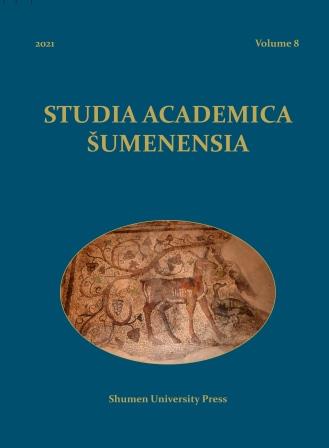PIXE-Analyses of Ingots and Scrap from the Art Metal Production Centre near Zlatar, Veliki Preslav Municipality
PIXE-Analyses of Ingots and Scrap from the Art Metal Production Centre near Zlatar, Veliki Preslav Municipality
Author(s): Stella Doncheva, Nina Arhangelova, Ákos Csepregi, Anikó Angyal, Zita SzikszaiSubject(s): History, Middle Ages
Published by: Шуменски университет »Епископ Константин Преславски«
Keywords: Metalwork; non-ferrous metals; alloys; lead bronze; tin-lead bronze
Summary/Abstract: In April 2018, a project called ACUDEMAB (Analyses of composition of non-ferrous metals, used for decorations in Early Middle Ages in Bulgaria) was successfully implemented in the Laboratory of Ion Beam Applications, MTA Atomki, Debrecen, in the frame-work of the EU H2020 IPERON CH (Integrated Project for the European Research Infra-structure ON Cultural Heritage) Trans-National Access program. Analysis of metal used for the casting of all these products, which is found in workshops and near furnaces can give convincing argument that this is precisely the metal used by medieval craftsmen. The results would give us the opportunity to identify ways of receipt of raw materials – import or reuse of waste products for new castings. The appearance of elements in the analysis depends on the geological and metallurgical conditions. According to the mineralogy of typical lead ores and the behaviour of the elements during the melting process, antimony Sb, arsenic As, bismuth Bi, copper Cu and silver Ag are among the leading elements in lead analysis. Similarly, with much less concentration than the actual melting of the ore, elements such as cobalt, iron, nickel and zinc, and gold, arsenic, selenium and tellurium may appear in the metal. Tin is not a typical ingredient for lead ores hence its absence in lead ingots. They belong to the so called Balkan metallogenic belt, where there are two basic types of mineralization: lead-zinc mineralization with key representatives of galenite, sphalerite, chalcopyrite, pyrite (there were some ancient galenite mines found) and gold bearing poly-metal minerals, represented by galenite, sphalerite and gold-bearing pyrite. Gold is placed in the oxidising zone of the galenite and pyrite. Investigations made on the remains of antique copper mines make us say with great certainty that the major portion of raw materials (copper and bronze) came from the Burgas-Strandja mining region. Numerous traces of mining activities were found in that region. Only in the Burgas sub-region there are more than 250 ancient ore mines.
Journal: Studia Academica Šumenensia
- Issue Year: 2021
- Issue No: 8
- Page Range: 71-98
- Page Count: 28
- Language: English

